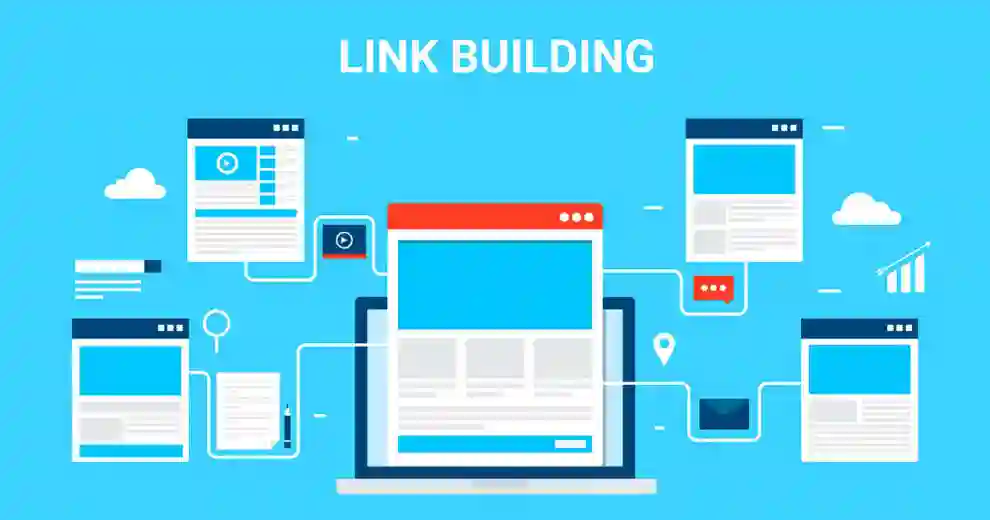Mastering the Art of White-Hat Link Building in 2024
- 762 Views
- Nicholas Éric
- December 18, 2023
- Digital Marketing
In the ever-evolving landscape of search engine optimization (SEO), mastering the art of white-hat link building remains paramount for website owners and digital marketers. As search algorithms become more sophisticated, the emphasis on ethical and sustainable link-building practices has never been more crucial. In this article, we’ll explore the strategies and tactics that define the landscape of white-hat link building in 2024, providing insights for mastering this essential aspect of SEO.
1. Understanding White-Hat Link Building:
White-hat link building refers to the practice of acquiring backlinks through ethical and Google-approved methods. These methods prioritize the creation of valuable content, fostering genuine relationships, and adhering to search engine guidelines. Unlike black-hat techniques that aim to manipulate search rankings, white-hat link building focuses on long-term success and sustainability.
2. Content Quality Is King:
The foundation of any successful white-hat link-building strategy is high-quality content. Content that is informative, engaging, and valuable to the target audience naturally attracts backlinks. Invest in creating comprehensive guides, insightful articles, and resources that become go-to references within your industry. When your content is deemed authoritative, others are more likely to link to it.
3. Guest Posting with Relevance:
Guest posting remains a powerful white-hat tactic when done with a focus on relevance and value. Identify reputable websites in your niche that accept guest contributions. Craft content that aligns with the interests of the target audience, providing insights and solutions. Guest posts should contribute meaningfully to the conversation, with the inclusion of a relevant link back to your site.
4. Resource Link Building:
Creating valuable resources within your niche is a cornerstone of white-hat link building. Develop guides, tutorials, or tools that genuinely assist your audience. Outreach to relevant websites, showcasing how your resource adds value to their content. This approach often leads to organic backlinks from websites looking to provide their audience with authoritative information.
5. Earn Links through Social Engagement:
Active engagement on social media platforms is not just about follower counts; it also contributes to white-hat link building. Share your content across different social channels, encourage user engagement, and participate in conversations within your industry. While social media links may not directly influence search rankings, they contribute to brand visibility and can lead to organic backlinks.
6. Influencer Relationships for Ethical Link Building:
Building relationships with influencers in your industry can result in ethical link-building opportunities. Engage with influencers by sharing their content, participating in discussions, and offering valuable insights. Genuine relationships often lead to influencers naturally linking to your content, contributing to the authenticity and credibility of your backlink profile.
7. Digital PR and Link Earning:
Engage in digital public relations activities that naturally lead to link earning. Being featured in reputable news outlets, industry publications, or online magazines can result in organic backlinks from authoritative sources. Develop a digital PR strategy that aligns with your brand’s narrative and contributes positively to your online presence.
8. Broken Link Building with Integrity:
Identifying broken links on authoritative websites and suggesting your content as a replacement is a white-hat tactic when executed with integrity. Instead of mass outreach, focus on websites where your content genuinely adds value. Notify website owners about the broken link and offer your relevant content as a helpful replacement.
9. Educational and Insightful Content:
Positioning yourself or your brand as an industry authority involves consistently sharing educational and insightful content. Write thought leadership pieces, contribute to industry forums, and engage in discussions. When your content is recognized for its value, others within your industry are more likely to link to it, contributing to your white-hat link-building efforts.
10. Strategic Internal Linking:
Optimizing internal linking is often overlooked but is a crucial aspect of white-hat SEO. Strategic internal links help distribute link equity across various pages of your website, improve navigation, and enhance the overall user experience. Ensure that internal links are contextually relevant and contribute meaningfully to the flow of your content.
11. Regular Monitoring and Adaptation:
White-hat link building is an ongoing process that requires regular monitoring and adaptation. Utilize tools like Google Search Console, Ahrefs, or Moz to assess the health of your link profile. Address any issues promptly, disavow toxic backlinks if necessary, and adapt your strategy based on changing industry trends and search engine algorithms.
12. Educate and Outreach Ethically:
Outreach is a critical component of white-hat link building. When conducting outreach, personalize your messages, demonstrate genuine interest in the recipient’s content, and articulate the value your content brings to their audience. Ethical outreach builds relationships and increases the likelihood of earning backlinks organically.
Conclusion:
Mastering the art of white-hat link building in 2024 requires a holistic approach that combines content excellence, genuine relationships, and adherence to ethical practices. As search engines continue to prioritize user experience and authenticity, white-hat strategies not only contribute to improved search rankings but also establish a foundation for long-term success. By embracing these white-hat link-building tactics, website owners and digital marketers can navigate the SEO landscape with integrity, achieving sustainable results in an ever-evolving digital era.





